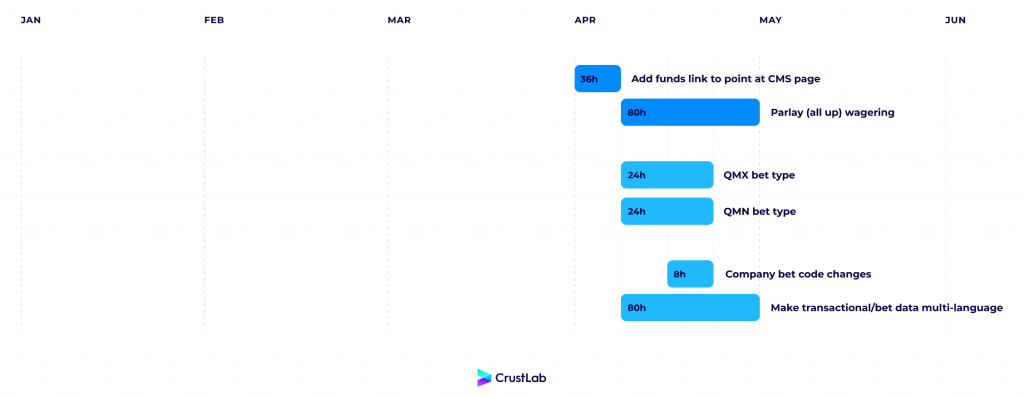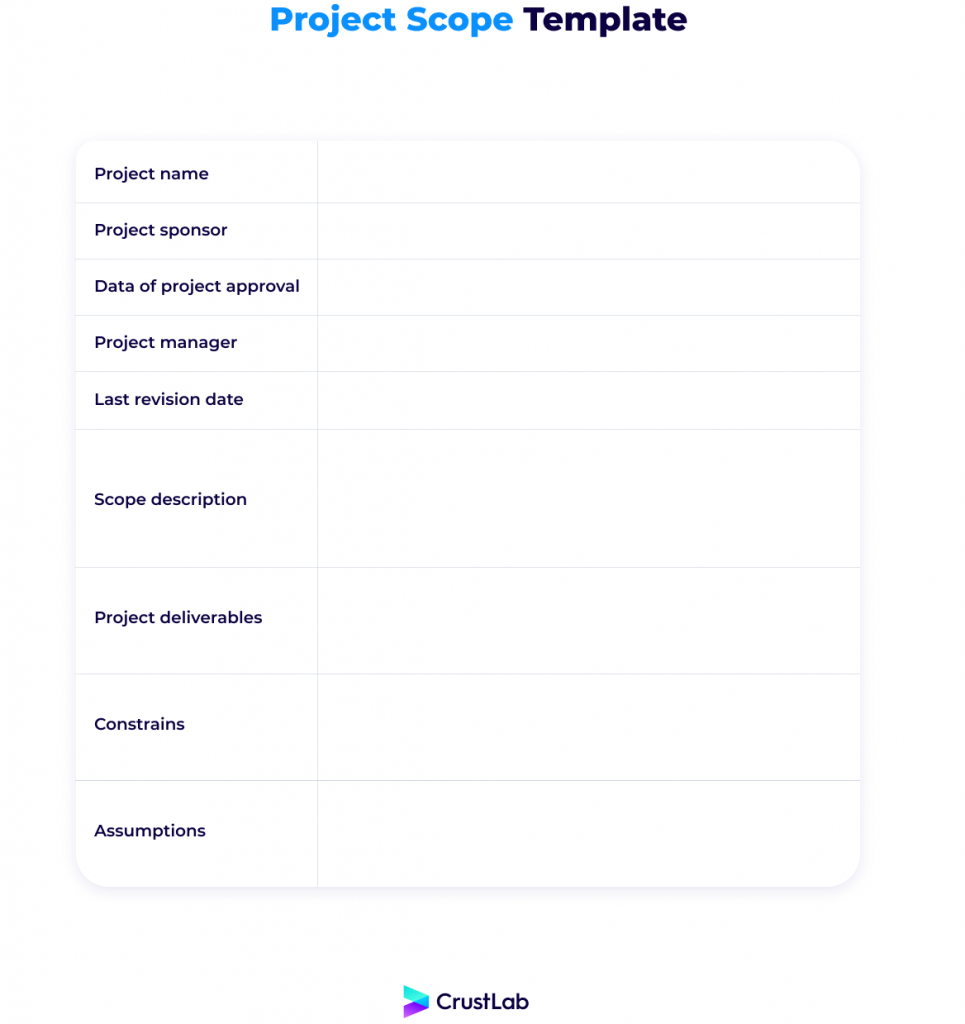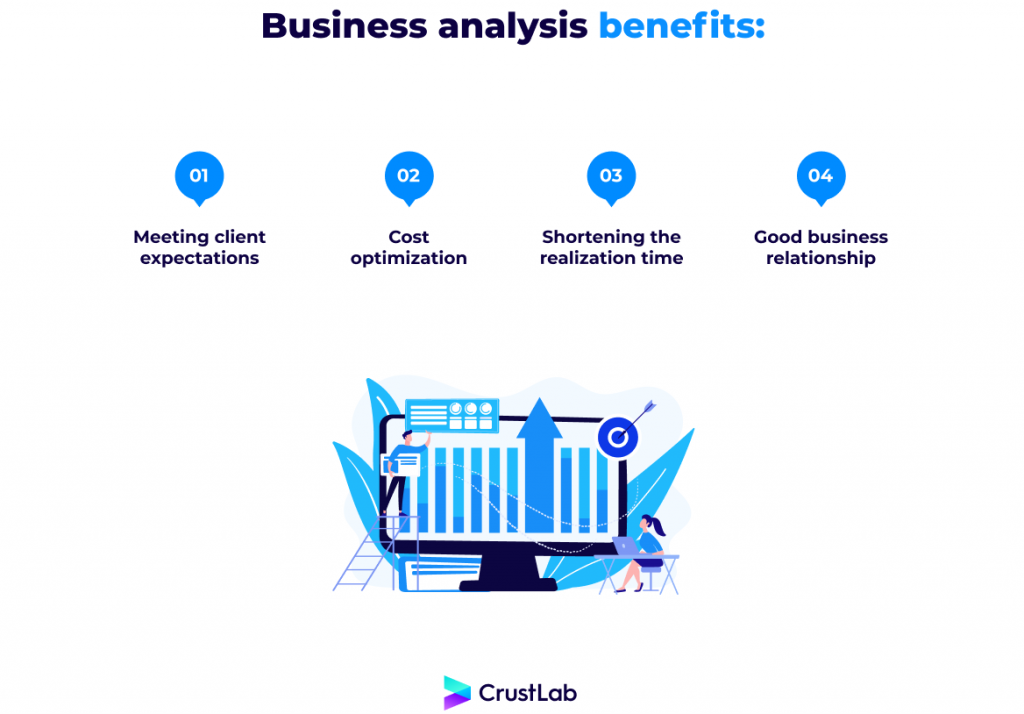Contents
Imagine that you have an idea for a digital product, budget for it, and maybe you have chosen a company that performs the software development process for you. You want to start working on it and see the first results. You can’t wait for it! You are convinced that there is nothing that can go wrong. But is it a good idea to start coding your application right away?
Practice shows that even the best-polished ideas may have defects or gaps that could be critical from the end-user and business point of view. The pre-implementation business analysis comes with help here. It is a useful tool that will help you collect information on various areas – on the functional requirements, characteristics of the market to which the product is dedicated, the end-user needs and expectations, the sphere of finance, or market competition. Of course, you cannot forget about the risks, the cost of the software design project, and the work schedule. It sounds a little like a buckle that holds the whole project together, which is what business analysis is.
The role of business analysis in the software development process
Business analysis should start at the very beginning of the project. Definitely, before the development & UX/UI teams fully jumped into the software development methodologies. However, it doesn’t mean that software developers and UX/UI designers should be omitted. On the contrary, their experience brings great value to the business analysis of a new project. These people have already solved many technical and business problems, and they can handle them at this early stage of development of a new product or software program. Also, participating in the analysis at this point brings long-term benefits to effective project management. The whole self-organizing cross-functional team – especially UX/UI designer and Project Manager – are crucial roles during this phase. A full understanding of the product idea and its requirement analysis will direct the team in the right direction, navigate towards the right complete development methodology, and help to design tailor-made solutions in the future.
A business analyst usually handles business analysis, but sometimes this role is also handled by a Project Manager with a business analysis skillset. This role is a bridge between the client (business part) and the development team (technical part). A business analyst has a challenging task. He has to translate business requirements into functional and, consequently, partly technical requirements.
How to conduct an effective business analysis?
Business analysis is a step towards creating a product that will satisfy your customers and surprise the competition. You can follow the sequence of steps below to perform the analysis.
Interviews with the client
Usually, it is a series of smaller workshops in the development cycle. During those sessions, business analysts or dedicated project managers cover questions about the purpose of the product, user’s expectations, competition, and the functions that the ready solution should have.
To conduct workshops, various tools and methods available on the market may be used, depending on the area you want to explore. However, all of them focus on understanding, vision, product, users, finances, competition, and risk.
Understanding
A common understanding of the experience and strengths of the parties cooperating in the project allows defining the conditions for future cooperation and competence areas. You may be asked, for example, about your industry experience or market research. All of this to better understand your needs.
Sample questions:
- Who is the client, and what is their professional experience with software development teams?
- Does the client have experience with software development projects in the IT industry?
- How does the client see responsibilities?
- How do they see the customer involvement phase in the software projects?
- What are their preferred software development approaches, design method or software development methodology framework?
- Do they have a decades-long goal, do they count on frequent delivery, or do they want to stick to strict delivery deadlines?
- Are they familiar with agile development?
- Do they have their own requirements analysis?
Vision
Defining the vision of software architecture and the roots of the product idea allows you to define the long-term goal of the product’s functioning on the market and better plan its implementation and development strategy. In addition, understanding the high-level ideas of creating a product will positively influence the understanding of your needs by the team and a better fit.
Sample questions:
- Where did the idea to create such a product come from?
- What is the business purpose of introducing a new product to the market?
- What are the company’s vision and mission?
- What is the development environment?
Product
This part of the analysis focuses on analyzing the individual functionalities of the product to define the connections and relations between them, focuses on how users will perceive the product, what product requirements are, and how the whole idea relates to the vision of the whole product. This extensive pre-planning supports facilitating business processes. As a result, you can expect a clear image of your product that your audience would like to see, along with the assessment of software processes.
Sample questions:
- What core need is to be met by the finished product – what are the project requirements?
- In which markets is the product expected to operate?
- What main functionalities should the product have?
- Is it a complex project or MVP?
- Choice of model – will it be development via agile model?
Users
By analyzing the part dedicated for end-users, you can discover what they expect from your product, their needs, and how the product will meet them. It is also important to understand how they will interact with your product which allows the whole team to focus on the critical parts of the product from the user’s point of view.
Sample questions:
- Who are the product’s end-users, and what are they looking for?
- What are the conscious/unconscious problems of the product’s recipients, and what are the needs?
- What communication channels are used by potential recipients?
- What could user requirements be?
Finances
The financial analysis is an opportunity for the entire team to understand the possibilities and financial expectations with which you start the project and will allow you to understand the earning plan on the finished product to design it more effectively.
Sample questions:
- How will the product be financed?
- How do you want to monetize the finished product?
- Do you want to allow the user to purchase premium options?
Competition
By taking a closer look at the competition operating on the same market will enable you to approach the design of a new solution more efficiently. This also presents the right, iterative approach to software development. Such a development phase helps avoid making similar mistakes as other companies’ solutions which allows you to focus on what is positively perceived by users – high-quality software, continuous integration, and feature-driven development.
Sample questions:
- Are there any other competing products in the market?
- How do the competitors work, and what quality products do they offer to clients?
- What are the software development activities they take?
- What the competition is doing poorly (what can be improved) and excellently, and can be used?
- What are their functional business systems?
- Do they use traditional models?
- What are predictions for their future development or approach to development?
Risk
Risk-free projects don’t exist – prediction of as many risks as possible and preparation of a plan for risk mitigation in the early stage of development is the key to success in any project. At this stage, you will be able to understand what challenges you will face with your team while creating a product.
Sample questions:
- What are the risks?
- How to reduce the chances of the inherent project risk factors occurring?
- Is there a risk management plan?
- Is there any risk assessment involved in activities during software development at all?
Technical
A discussion at an early architectural design phase of a project implementation focused on the technological possibilities and limitations is as important as analyzing business assumptions. Many technical problems can appear due to the complexity of application features and constraints imposed by the selected technology. By analyzing these parameters, you and the team will know what you face and which elements will require more of your attention.
Sample questions:
- Will the selected technologies and programming languages allow us to perform the planned scope of work?
- Do the selected technologies impose any limitations on a team that should be aware of?
- Are flexible frameworks a thing?
- Is feasibility analysis going to be conducted?
- How to achieve engineering excellence?
- Will agile methods be used at all?
Analysis of the collected information
Initially, all the team members, especially the Product Owners, should carefully review the collected information. All inconsistent elements which require details or closer inspection should be pointed out. It is also the time to clarify the elements that raise questions and doubts.
Final team involvement
After analyzing the collected information, the whole project team gets involved. Depending on a project in a project can be evolved iOS and Android developers (for mobile applications ) or back-end and front-end developers (for web applications ). For any project, there is always a PM, UX/UI designer, and tester involved in ensuring the quality and standards of the produced software. The project team together reviews the information again to ensure that they can bring value to the final product and create solutions at a satisfactory level of quality and with customer satisfaction.
Creating an analysis document
Once the team double-checks the collected requirements, a person responsible for the project documentation should double-check and include all the details. This document contains all information obtained from the client about the project. All requirements, expectations, customer satisfaction metrics, and test results are included in it. Furthermore, the document should be a valid benchmark for the entire team’s activities from the start of software development of any application software.

Creating the scope of the project – why would software developers be grateful?
Collected requirements with the help of the development team and project manager are reflected in the project’s scope – the scope of work to be performed for the product to be considered finished. The project scope for IT projects is reflected in the project backlog. It is a list of all the tasks necessary to produce a ready-to-use product.
Keeping in mind the importance of an in-depth description of all the needs, a properly crafted scope of the project could dramatically decrease the development time. Software testing team members would quickly jump into the project, ensuring that software quality is on edge and with a focus on testing. Software developers will make fewer mistakes in software development lifecycle. The need for changes will potentially be drastically reduced, positively impacting the project budget and development of software.

Software development life cycle – how to schedule the whole analysis
This stage of software development includes the estimation of working time and the necessary budget and setting the criteria for the acceptance of the system by the client. Then, graphically, the project’s scope can be overlaid on the timeline in a software development process roadmap and software development cycle.
At the end of this process appears a set of requirements necessary for the implementation of your application. At this point, it is essential to verify and validate requirements again. Therefore, the entire engineering team focuses on monitoring the appropriate quality of the conditions. According to the best standards, the requirements must be consistent – as flawless as possible, technically feasible, and testable. If these criteria are not met, they will soon require programming improvement, leading to additional time, budget, and resources investment.
When sending an inquiry, the focus is usually on the solution, while the software development process is a highly complex set of tasks. Without being aware of the flow of such a process and trying to predict possible complications, you risk additional costs and possible extension of the implementation time, which is very valuable.
The pre-implementation business analysis brings several benefits:
- Meeting expectations – the requirements are detailed and precise to ensure that the final product will meet users’ expectations.
- Cost optimization – the team knows what to do, so you are not surprised by the additional costs.
- Shortening the realization time – when all the requirements are collected, the team can determine the optimal implementation path, reducing the time spent preparing the solution.
- Good business relationship – during the analysis phase, the whole agile team can get to know each other and establish the first relationships that will be helpful while working on the project and for customer satisfaction.
- Consideration of project continuation or termination.

Summary
Is it possible to implement an IT project without pre-implementation business analysis? Yes, the current market proves that it is possible but challenging due to the risks that increase with the project’s scope. In the case of large and complex projects, a pre-implementation analysis is a necessity and standard. With simpler ones, IT expert advice, effective project management, and close cooperation between companies may be enough. It should be noted, however, that this will not replace a professionally conducted analysis. The question is, is it worth counting on luck in this matter?



